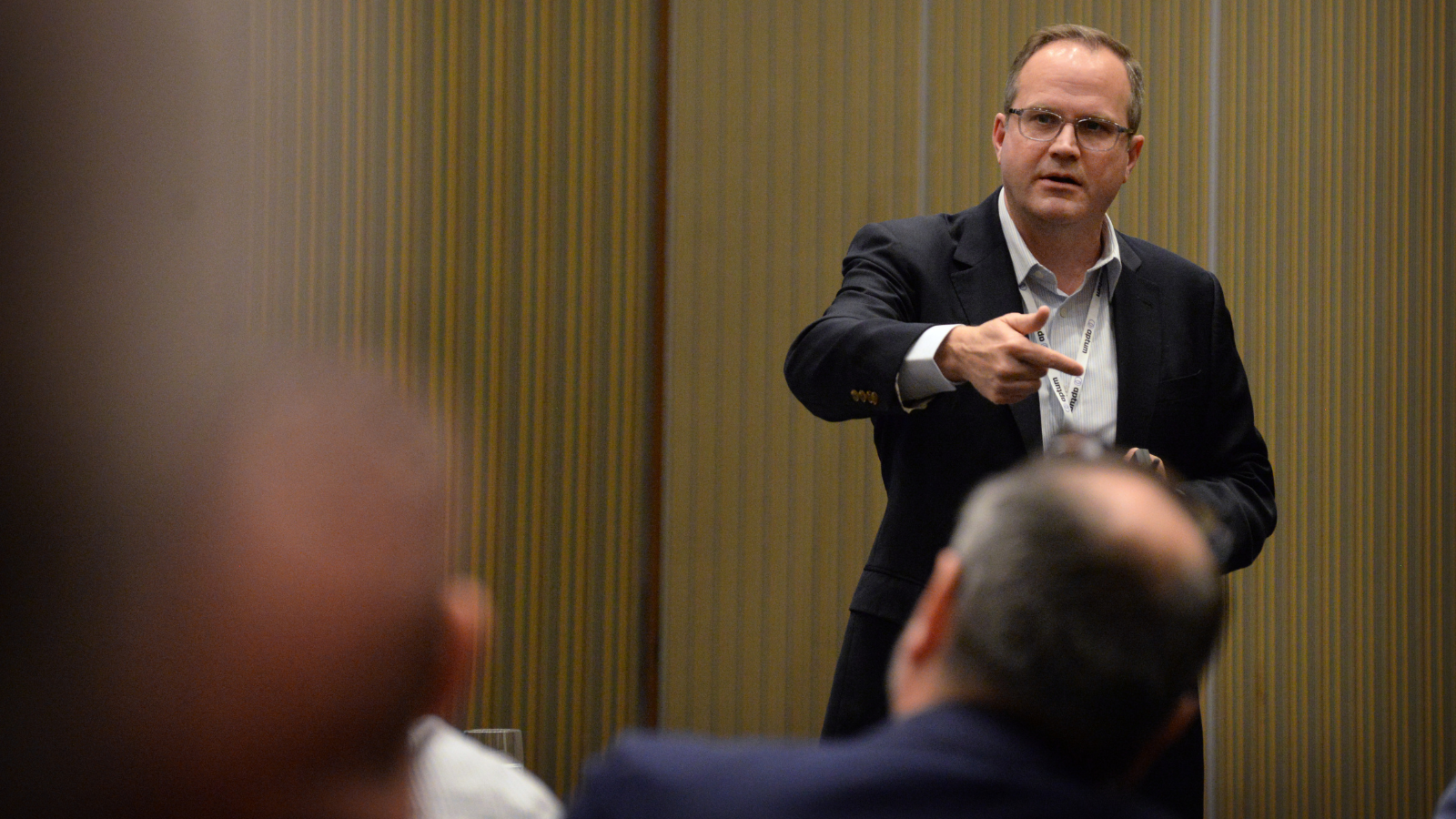Science
Ecosystem Insights Drive Effective Technology Adoption Strategies

Technology adoption in complex ecosystems can significantly influence business success, as highlighted by Michael Lewis, Chief Technology Officer (CTO) of Management Controls, during his presentation at the CIO Association of Canada’s Peer Forum in Ottawa. Lewis candidly discussed a costly project misstep that underscored how a single wrong decision can jeopardize not only resources but also the overall adoption of technology among various stakeholders.
Lessons from Experience
Drawing from nearly two decades of experience in building software for industrial giants, Lewis emphasized that technology success goes beyond just features. It hinges on whether all involved parties—including owners, vendors, and front-line users—find genuine value in the technology. He pointed out that Chief Information Officers (CIOs) must implement strict checkpoints and actively listen to concerns to identify friction before it escalates into failure.
Lewis detailed the necessity of structured feedback in the development process, even if it delays project timelines. His team utilizes a quarterly advisory board designed to minimize biases and ground ideas in practical realities. He recalled a case involving a mobile timesheet tool that appeared flawless to internal experts but faltered during customer testing in remote environments. The advisory board’s rejection of the tool ultimately saved the company from a costly rollout, reinforcing the importance of checkpoints that catch errors prior to launch.
Confronting Failure and Embracing AI
Lewis openly admitted that not every initiative succeeds, sharing an instance where a nine-month evaluation of a reporting tool led to a reversal when users preferred Power BI over the embedded solution. “We’re going to live with this solution for a really long time,” he recalled stating in a leadership meeting. This admission highlighted a crucial lesson for CIOs: sunk costs should not dictate the continuation of ineffective systems. Having an internal services group regularly using the software provided the evidence needed for Lewis to shift course.
In discussing the integration of generative AI, Lewis described a chatbot designed to provide real-time support to vendors while allowing authorizers to query contract terms directly. This was particularly beneficial in environments where procurement documents were often inaccessible. The tool alleviated challenges stemming from high turnover rates in contractor roles, ensuring that help and contract intelligence were available on demand in multiple languages.
Initially skeptical about the value of a chatbot, Lewis realized its effectiveness once it addressed specific business problems. This approach not only earned his team a CIO 100 award but also demonstrated how generative AI can alleviate real pain points rather than merely following trends.
Further demonstrating the potential of AI, Lewis recounted a case involving a lump-sum project valued at $600,000, originally estimated at 10,000 hours of work. Upon review, only 4,900 hours were logged, effectively doubling the hourly rate. By leveraging generative AI to reconcile contract language, workforce data, and market benchmarks, Lewis’s team provided leaders with unprecedented transparency.
This analytical capability empowered procurement teams to challenge inflated rates, while also assisting vendors in complying with regulations concerning work fatigue and crew requirements. The collaboration resulted in both parties entering negotiations with a clearer understanding of the facts.
Navigating Ecosystem Challenges
Lewis’s insights underscore the critical nature of ecosystems in technology adoption, where both risks and rewards are amplified. He noted that products only succeed when multiple communities engage with them, emphasizing the need for CIOs to create processes that reveal friction early, acknowledge failures, and ground new technologies in real-world problems faced by users.
He concluded, “When you have an ecosystem-type product where it takes multiple user communities, the importance of these items gets amplified.” The takeaway for leaders is that discipline within processes is not merely bureaucratic; it acts as a safeguard. Implementing measures such as checkpoints and candid discussions about reversals may seem time-consuming, but they ultimately prevent wasted efforts and foster trust within the system.
The stakes are higher in ecosystems, where a feature that works for one group may fail another, leading to system breakdowns. Acknowledging mistakes early can save teams from prolonged frustration and enhance credibility by prioritizing evidence over ego. Guardrails like checkpoints can feel overly cautious, yet they are crucial for survival, allowing leaders to identify blind spots and make informed decisions in environments where the costs of failure can escalate rapidly.
Digital Journal serves as the national media partner for the CIO Association of Canada.
-

 Science3 months ago
Science3 months agoToyoake City Proposes Daily Two-Hour Smartphone Use Limit
-

 Top Stories3 months ago
Top Stories3 months agoPedestrian Fatally Injured in Esquimalt Collision on August 14
-

 Health3 months ago
Health3 months agoB.C. Review Reveals Urgent Need for Rare-Disease Drug Reforms
-

 Technology3 months ago
Technology3 months agoDark Adventure Game “Bye Sweet Carole” Set for October Release
-

 World3 months ago
World3 months agoJimmy Lai’s Defense Challenges Charges Under National Security Law
-

 Lifestyle3 months ago
Lifestyle3 months agoVictoria’s Pop-Up Shop Shines Light on B.C.’s Wolf Cull
-

 Technology3 months ago
Technology3 months agoKonami Revives Iconic Metal Gear Solid Delta Ahead of Release
-

 Technology3 months ago
Technology3 months agoApple Expands Self-Service Repair Program to Canada
-

 Technology3 months ago
Technology3 months agoSnapmaker U1 Color 3D Printer Redefines Speed and Sustainability
-

 Technology3 months ago
Technology3 months agoAION Folding Knife: Redefining EDC Design with Premium Materials
-

 Business3 months ago
Business3 months agoGordon Murray Automotive Unveils S1 LM and Le Mans GTR at Monterey
-

 Technology3 months ago
Technology3 months agoSolve Today’s Wordle Challenge: Hints and Answer for August 19









